It’s impossible to kill a snake plant, or so they say–but most gardeners will tell you that they’ve killed many an “easy” plant as beginners. While they can be great additions to the home, snake plants do have their downsides.
Snake plants are easy to kill via overwatering, and improper care can also lead to pests or diseases. They don’t do as well in low light settings as many plant sellers would have you believe, and they’re dangerously toxic to both humans and pets.
In this article, we’ll discuss the downsides of owning snake plants so that you can decide if they’re truly the right fit for you.
#1: They’re Toxic to Pets and People
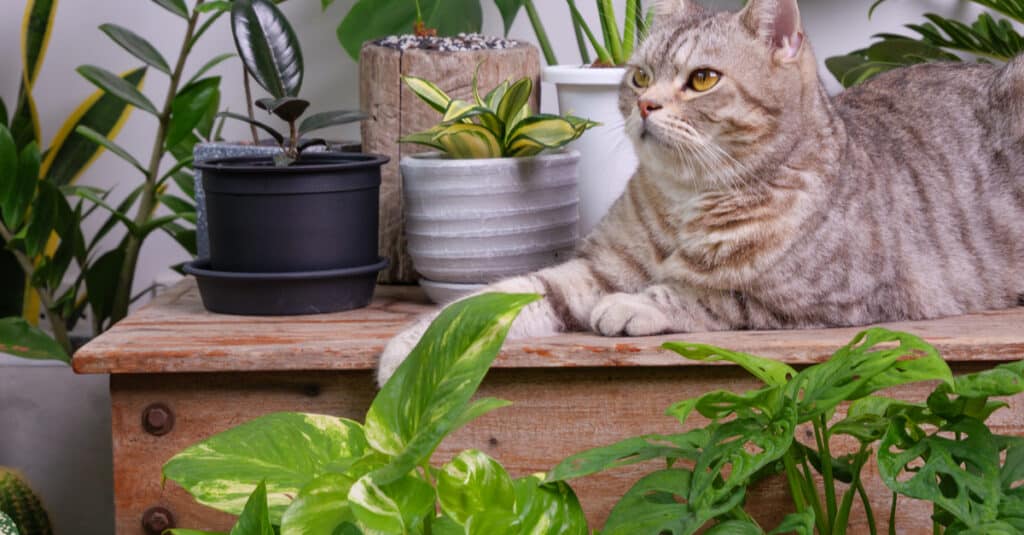
If you have pets or small children, snake plants might not be right for you.
©Foto2rich/Shutterstock.com
Snake plants are toxic to dogs and cats, with clinical signs such as:
- Mouth pain or discomfort
- Excessive drooling
- Nausea
- Vomiting
- Diarrhea
- Decreased appetite
- Depression
- Weakness
- Incoordination
Cats may also develop additional symptoms such as mydriasis (dilated pupils) and tachycardia (rapid heart rate).
Your pet may have these symptoms after eating a snake plant, so it’s important to keep it well out of their reach.
The plants are also toxic to humans, so you shouldn’t eat them and should keep them away from babies and young children. Symptoms are similar in people, and there was also a case where a woman died of liver failure after consuming raw Sansevieria (the plant family that the snake plant belongs to) for a month.
#2: They Grow Slowly

Your snake plant will likely stay the size you bought it at for a long time.
©Bilalstock/Shutterstock.com
Snake plants grow very slowly, especially when kept in low-light conditions which is what many tags on these plants recommend. (They can tolerate up to full sun, which we’ll discuss further below!)
These aren’t the plants to buy if you want to see new leaves consistently or propagate their many offshoots. Though you will see both new leaves and offshoots over time, neither will happen overnight.
Some better choices for fast-growing plants include pothos and nerve plants (Fittonia)–but do keep in mind that pothos are also toxic if you have pets or children in the home.
#3: Snake Plants are Easy to Overwater
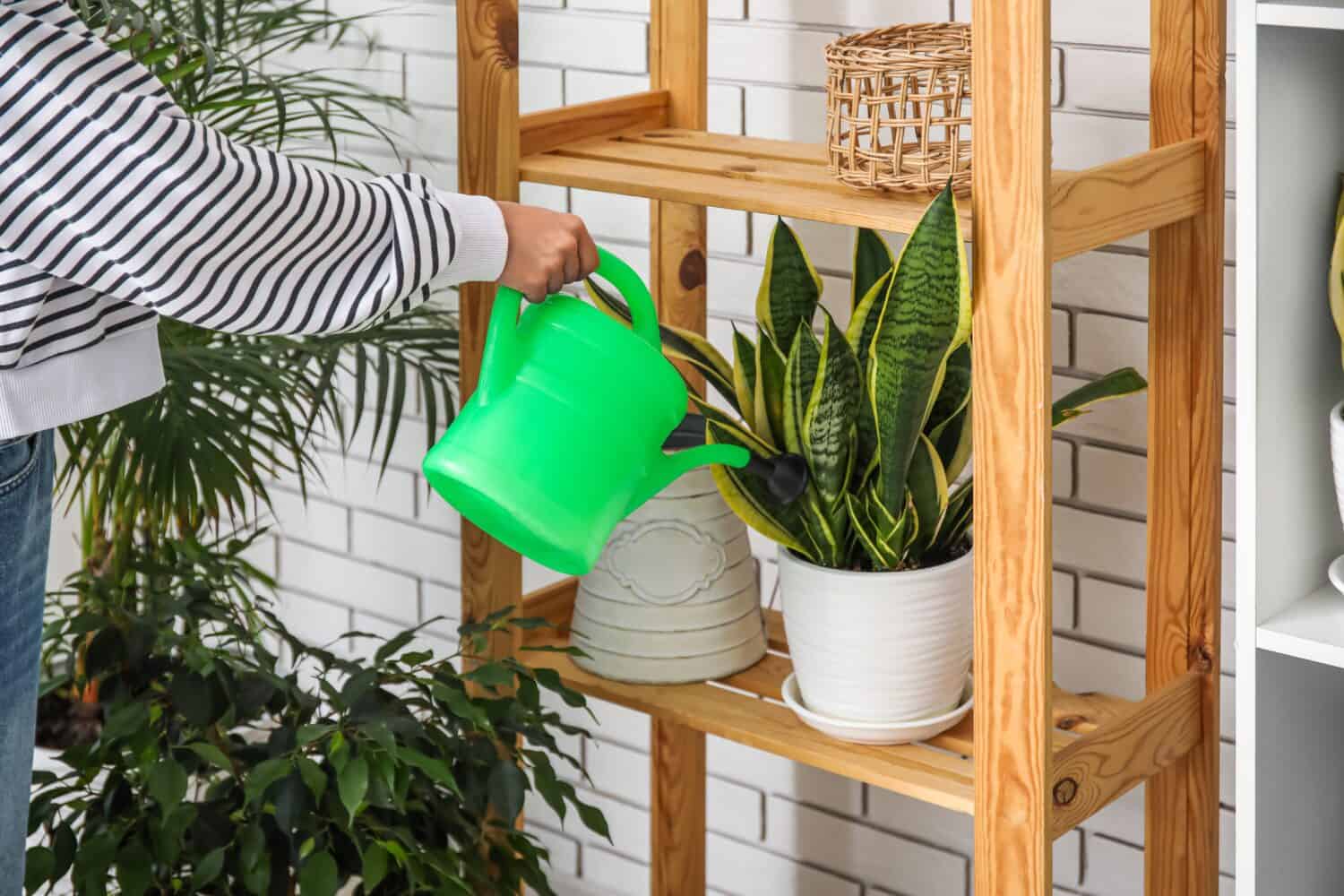
Overwatering can kill a snake plant.
©Pixel-Shot/Shutterstock.com
It’s so easy for a beginner gardener to overwater their snake plant! When we get into this hobby, we tend to begin with a few plants that we want to pamper and care for every day.
It doesn’t help that big box stores tend to sell plants in poorly-draining soil that holds onto too much water. Even if you rarely water your Sansevieria, you might be overwatering if it’s in this type of soil.
These plants like to be watered until water pours from the pot’s drainage holes, then left alone until the soil is completely dry. But if your soil doesn’t dry out, it essentially drowns your plant, which often leads to root rot.
#4: They’re Prone to Root Rot
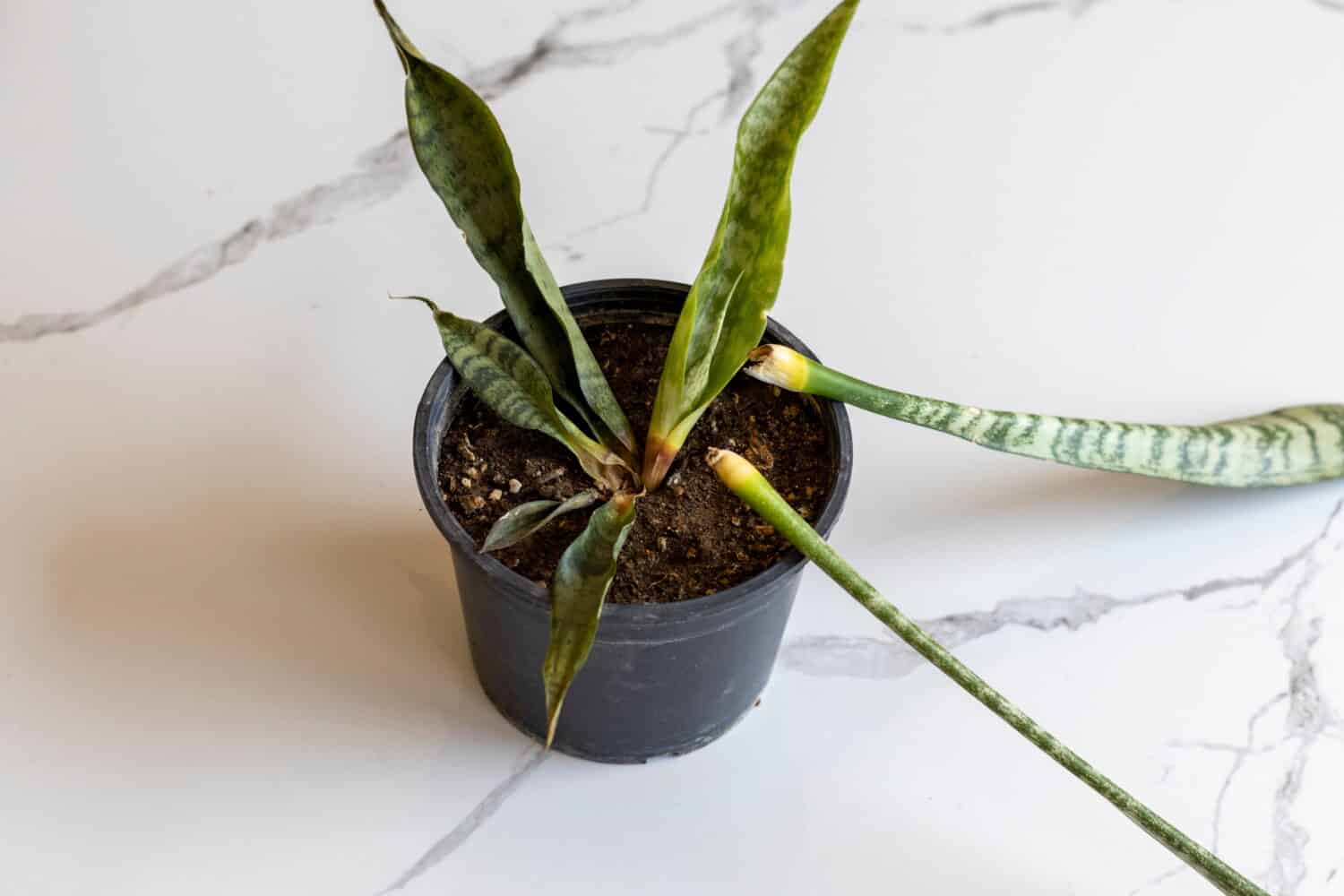
Overwatering often leads to root rot, which snake plants are susceptible to.
©GreenThumbShots/Shutterstock.com
Root rot typically happens when a plant is overwatered. Root rot kills a plant with symptoms like dark, decaying roots, wilting leaves, and dark, mushy areas that begin at the base of the plant and work their way up.
By the time you can see root rot above the soil, you likely cannot save the plant, though you may be able to propagate leaves by cutting them above the rotted area.
If your snake plant appears to be wilting or toppling over, or its leaves are bent, then it may have root rot.
#5: They Dislike Humidity
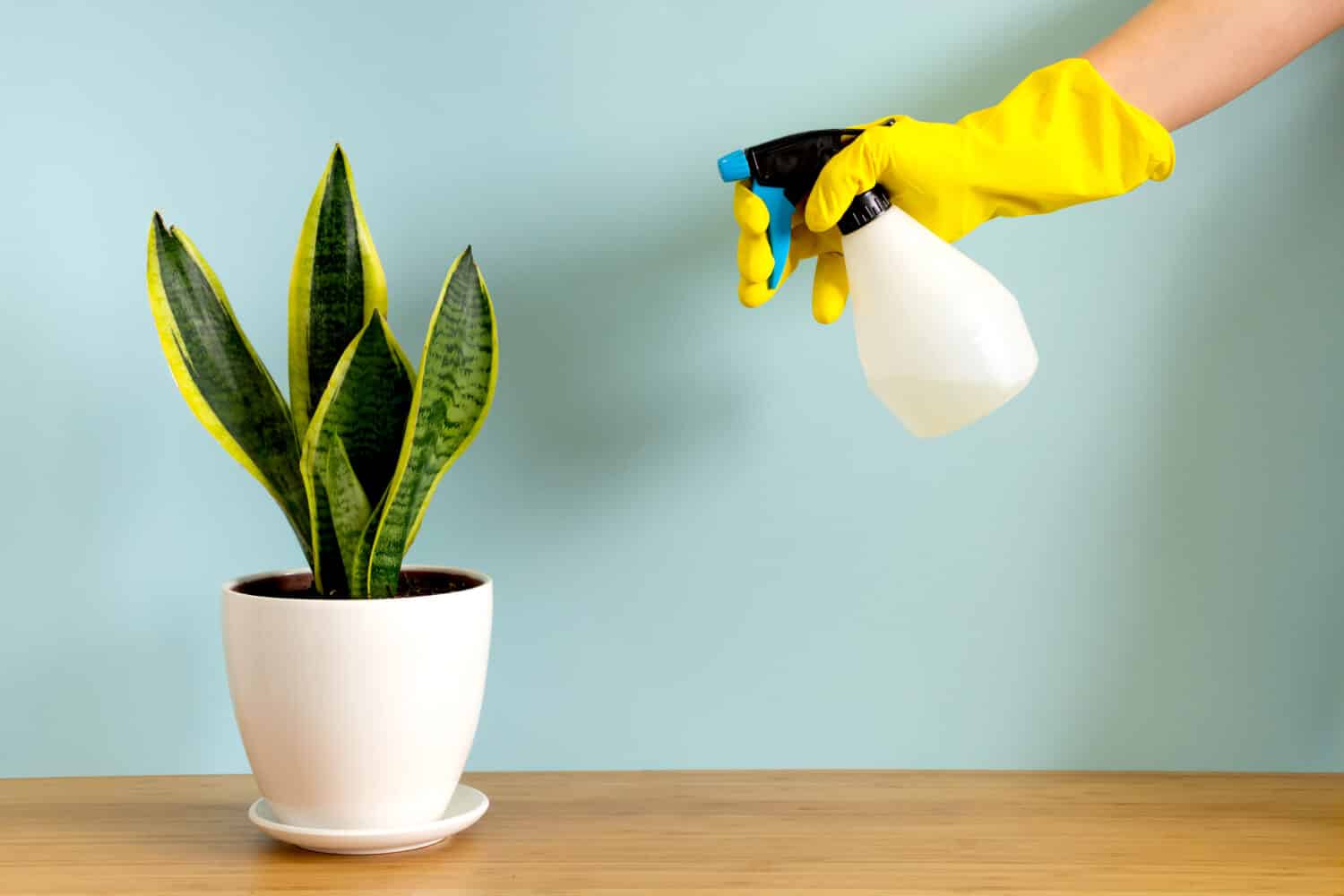
Misting your snake plant is bad for its health.
©Svetlana Glazkova/Shutterstock.com
Snake plants are succulents, meaning they hold onto water within their leaves. They’re designed to survive draughts, not to live in humid conditions.
Humidity can keep the soil damp for longer and can lead to overwatering or root rot. It’s not recommended to mist your snake plant or to keep it near a humidifier.
#6: They Need More Sunlight Than You Think
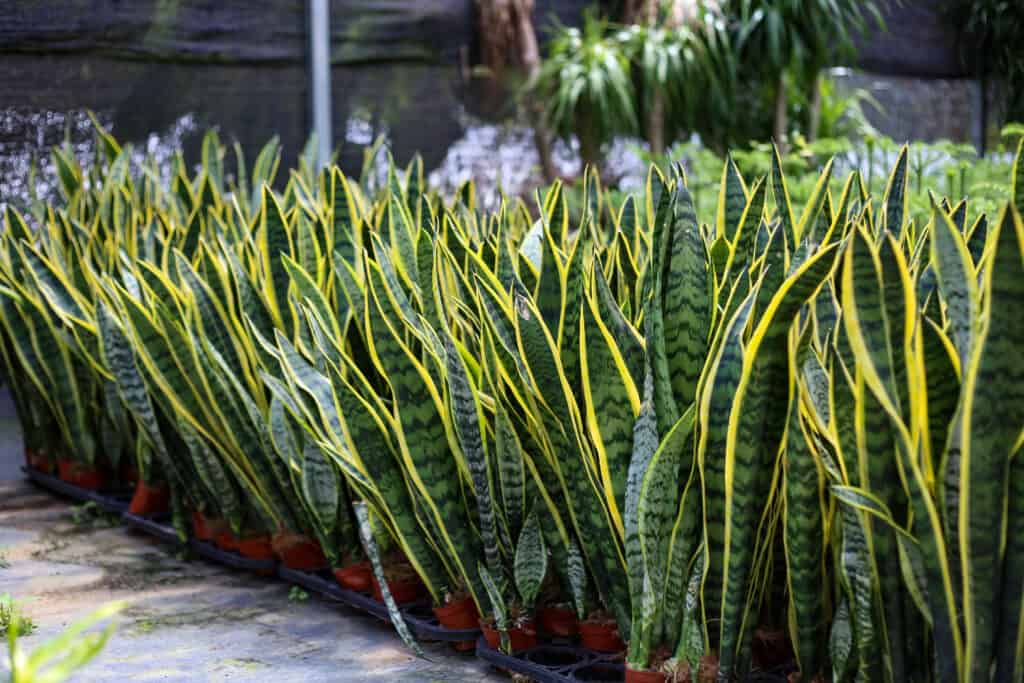
Snake plants thrive in sunny locations.
©iStock.com/Joimi Joh Abi
Snake plants are advertised as low-light plants because they can tolerate fairly dark conditions compared to other plants. However, they thrive when given as much light as you can offer.
In low lighting, snake plants will grow slower and need less water. It’s extra important that they have well-draining soil so that it doesn’t stay wet too long without sunshine to help the water evaporate.
Low light also may not mean what you think it does, especially if you’re new to keeping houseplants. All plants need light to survive, so a snake plant is likely to suffer in a dark hallway or bathroom.
To see your snake plant thrive, try placing it in a bright, sunny location. They can tolerate up to full sun if acclimated, but increasing their light too quickly can burn the plant. You may need to place it a couple of feet away from the window at first and slowly move it closer over time.
#7: They’re Sensitive to Low Temperatures
If you live in a cold environment, your snake plant will die outdoors–and maybe even next to a breezy window. They prefer to remain above 55 degrees Fahrenheit and will die if temperatures drop below freezing.
Luckily, most peoples’ homes are plenty warm enough to keep a snake plant comfortable. If you want to put your plant outside, be sure to bring it indoors whenever the temperatures drop below 40-50 degrees.
#8: Your Snake Plant is Unlikely to Flower

Snake plants have beautiful flowers but are primarily grown for their foliage.
©KelaVi/Shutterstock.com
You’re unlikely to see flowers on your snake plant, and very lucky if you do! Especially when grown indoors, they don’t bloom consistently.
If you want to see your snake plant bloom, keeping it in the brightest light possible is your best chance. Good lighting promotes growth and flowering in plants.
As we discussed above, be sure to introduce your plant to brighter lighting slowly, especially if you’ve kept it in a dark area until now. It can develop burns on the leaves or even die if transitioned too quickly.
#9: They’re Hard to Grow From Seed

Starting snake plants from seed is difficult and often unsuccessful.
©WuengDesign/Shutterstock.com
Speaking of flowers, you might be wondering if you could grow snake plants from seed. Unfortunately, this isn’t easy to do–propagating from cuttings is typically more successful.
Snake plants can self-pollinate, and if yours flowers you may notice orange berries develop. Once they dry, you’ll be able to remove the seeds and plant them in moist, well-draining soil.
It’s worth a try if you’re lucky enough to get flowers, but don’t count on getting too many plants from the endeavor!
#10: Propagation Can be Difficult, Especially for Beginners

Snake plants can propagate via offshoots or leaf cuttings, but it can be difficult and time-consuming to get them to grow.
©GreenThumbShots/Shutterstock.com
While propagation is often more successful than growing snake plants from seed, it can still be tricky for those without experience.
This is because these newly-developing plants need to be kept in soil that’s consistently moist, but not overly wet or soggy. It can be a difficult balance to strike, and many propagations die of root rot.
Growing the cuttings in water can eliminate your risk of root rot in the beginning, but transferring from water to soil can also be difficult to achieve.
#11: They Can Develop Pests

Mealybugs are common pests you might spot on your snake plant.
©iStock.com/HHelene
The most common pests you might see on your snake plant are mealybugs, spider mites, and fungus gnats.
Mealybugs
Mealybugs are small white bugs that look like they’re surrounded by cotton. They’re notoriously difficult to kill and like hiding in crevices, such as between the leaves in the center of a snake plant. They drink the sap of your snake plant, and extreme infestations can lead to death.
There are many ways to get rid of mealybugs, including spraying them off with a hose outside, applying isopropyl alcohol to the bugs themselves, and using neem oil.
Spider Mites
Spider mites are even smaller, and you typically notice their webs before you see the insects themselves. They’re very difficult to see with the naked eye and might look like specks of dust on your plant.
Spider mites cause leaves to shrivel and die, which can lead to the death of the entire plant in cases of severe infestation.
Spider mites can be removed by washing the plant thoroughly and regularly. It’s often a time-consuming process, and some people choose to remove the plant rather than risk the spider mites spreading to other plants in the home.
Fungus Gnats
Lastly, adult fungus gnats won’t damage your spider plant. However, they will fly around the area and are bothersome to deal with. They lay their eggs in wet soil and their larvae survive on soil matter. Sometimes, the larvae will also eat the roots of a snake plant, which can kill the plant in extreme cases.
Bottom-watering is the best way to eliminate fungus gnats, in my experience. Set your spider plant in a tub of water around 1/3 the depth of the pot and allow the soil to soak up the water. Remove the plant before the water reaches the top layer of soil.
This stops the gnats from being able to lay eggs in the soil. This stops the reproductive cycle, and now you’ll just need to trap the adult gnats. Most people use double-sided tape near the plant.
Preventing Pests
The best ways to keep pests away from your snake plant are to care for it properly, avoid overwatering, and check new plants for pests before bringing them home.
If you use pesticides on your plant, please ensure that they’re not harmful to your pets, family, or the environment!
#12: Your Snake Plant Can Get Sick
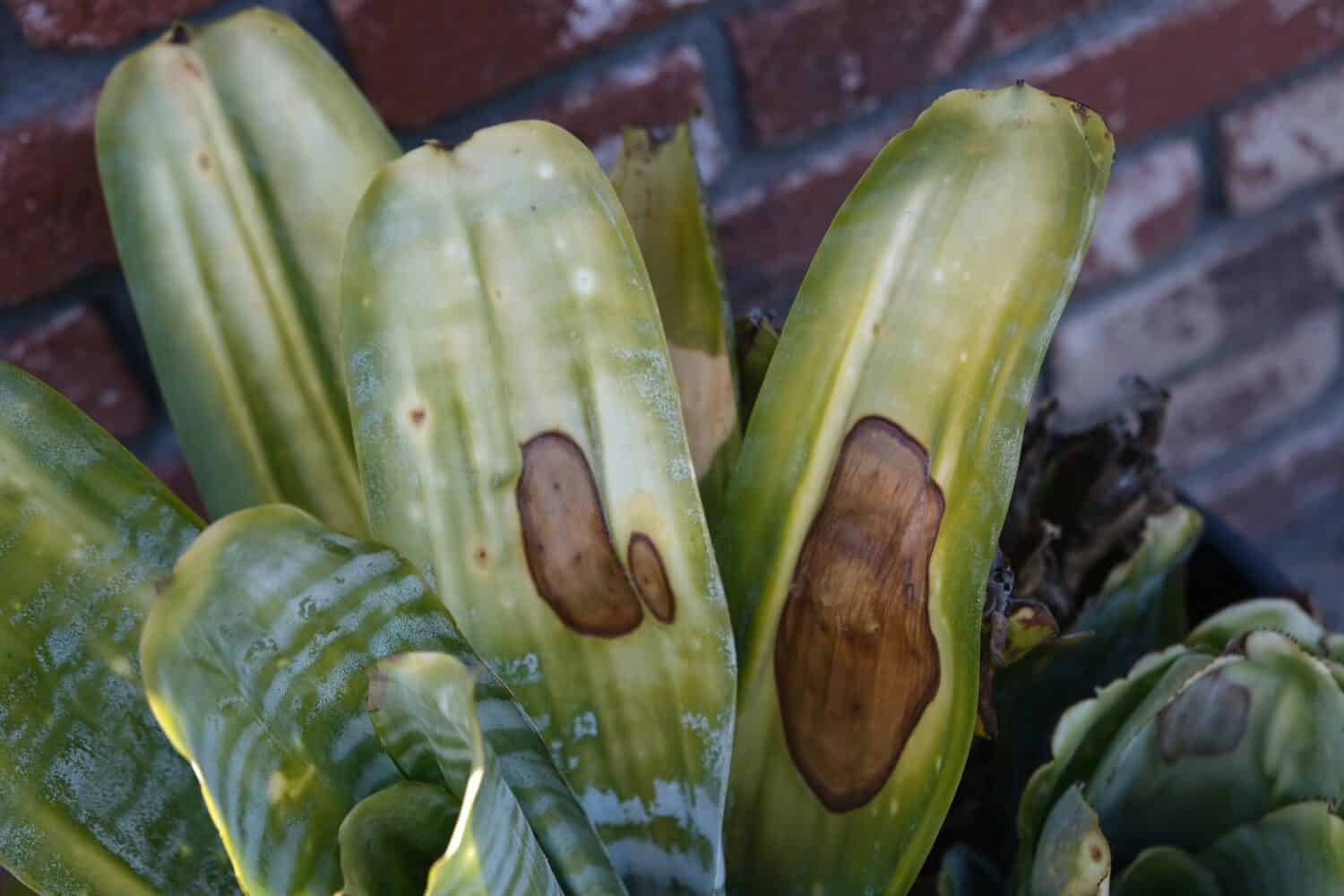
Your snake plant is prone to fungal diseases if overwatered.
©Ombee Ly/Shutterstock.com
Snake plants are pretty hardy, but they can develop diseases. They’re especially susceptible when over or underwatered, kept in cold environments, or are grown in very low light conditions.
If your plant receives proper care, you’re less likely to encounter disease, but it’s never impossible.
Some diseases you may see in your snake plant include southern blight, red leaf spot, and powdery mildew.
- Southern blight is a fungal disease that causes dark brown patches to form on a snake plant’s leaves.
- Red leaf spot is just like it sounds, causing red, mushy spots to develop on the plant’s leaves. It can look similar to root rot.
- Powdery mildew looks like black and white powder on your snake plant’s leaves. It’s most common when the soil is moist and the air is cool.
#13: They Can Develop Curled Leaves
Curled leaves on a snake plant are a sign of a watering problem. If your snake plant has leaves that curl instead of standing upright, it may be either over or underwatered.
To know which one is the case, think about your watering schedule and the soil your plant is growing in. If the soil is still wet days after watering, and the plant’s leaves are still curled, you’re likely overwatering.
If the soil feels very dry and it’s been a while since you last watered, then a deep watering might solve the issue.
#14: They Aren’t the Best for Helicopter Plant Parents

Those who like to spend lots of time caring for their plants won’t get that from a snake plant.
©Rawpixel.com/Shutterstock.com
We’ve touched on this in the above sections, but snake plants aren’t the best plants for people who like to hover over and care for their plants every day.
They’re said to thrive with neglect, which means they prefer too little watering to too much. Remember that these are desert plants that adapted to survive draughts, not humidity and rain.
They also grow slowly and you may not feel like the plant is paying you back for the care you provide. Although, on the other hand, it may be even more exciting to see a new leaf emerge! It really depends on your preferences.
#15: Some People Believe They’re Bad Luck
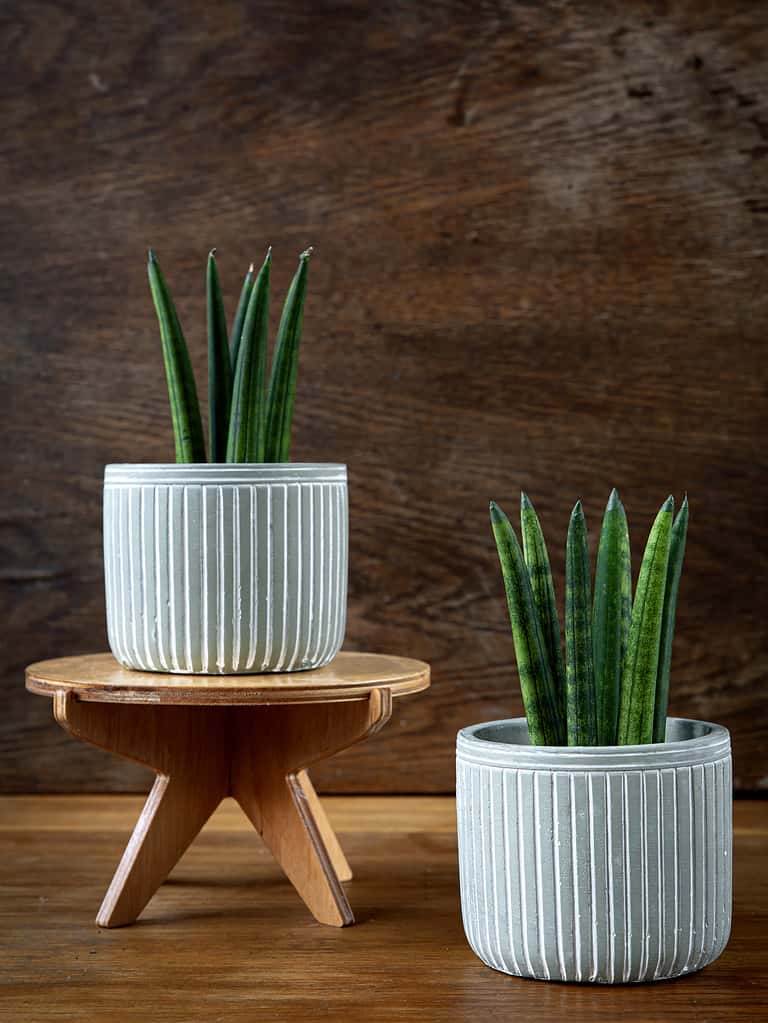
In Feng Shui, snake plants can bring bad luck if not placed in the right areas of the home.
©Damian Lugowski/iStock via Getty Images
Lastly, some people believe that snake plants are bad luck. This is partially due to their link to snakes, which are seen as evil by some cultures.
In Feng Shui, snake plants can be seen as bringing bad energy into the home due to their sharp, pointed leaves. But, these same leaves can be used to block out negative energy if you place the plant near entryways, such as the balcony or front door.
On the other hand, some people see these plants as good for the home since they help to keep the air clean and liven up the space.
#16: There are so Many Varieties!

It’s easy to end up with too many snake plants if you fall in love with them.
©GreenThumbShots/Shutterstock.com
If you really get into keeping snake plants, you might find that they hurt your wallet! There are over 70 types of snake plants, 15 of which are commonly sold as houseplants.
They’re tempting to buy with their striking foliage and assorted colors and patterns. They stand out amongst other plants and are eye-catching in a group.
In addition, it can be easy to pick up just one more plant from the store when you know you can care for them successfully. And, despite their downsides, snake plants are generally easy to care for!
It’s not uncommon for a houseplant collector to end up with many snake plants in their collection.
Thank you for reading! If you have feedback on this post, please contact the AZ Animals editorial team.
The photo featured at the top of this post is © Pixel-Shot/Shutterstock.com
Thank you for reading! Have some feedback for us? Contact the AZ Animals editorial team.







